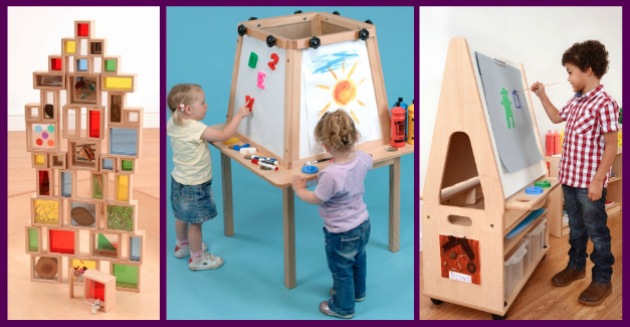
Encouraging, nurturing and valuing creativity is one of the most valuable gifts that you can give to an under-five.
That’s because young children benefit enormously when they’re given the freedom and permission to express their ideas fully: …
• They gain confidence through unchallenged self-expression
• They grow their independence when they take responsibility and lead their own play
• They learn a range of skills through unrestricted creative discovery and exploration
In short, when real creative play is practiced, children can really thrive.
But it’s not always easy for adults to ‘let go’ and let children be!
One common pressure is that children’s parents often want to see an ‘end result’. But in true creative play, children don’t always produce a perfectly finished piece of artwork or block model. As far as learning goes, that doesn’t matter.
You see it’s not about finishing what the child started; it’s more about the process of being creative.
As a result, children gain far more when adults get involved by asking questions that extend the discovery – instead of suggesting to the child what they should do. Children gain less when well-intentioned adults structure the activity or when they try to encourage a child to finish what they’re doing, when the child’s imagination has moved on.
Just let go…
The layout of the setting and the resources provided, play a significant role in the quality of a child’s creative play.
Creativity can be fully released when activities are open-ended and unstructured. For example, instead of asking children to build a space rocket, provide the materials needed for junk modelling and see what children produce.
Block play is another great open-ended activity. Arts and crafts are also a popular choice, but beware of restricting children’s imaginations by limiting the choices of materials and resources available.
In addition, give children the space to move around freely. For example, make large workspaces available and offer variety. Easels give children a subtly different perspective of their work than table-based creativity – so give children the choice. This double-sided four-person easel is perfect for collaboration, and because the legs can be dismantled children can use this easel standing and sitting.
Make resources easily available for busy fingers to select from too. For example, this sturdy storage station is designed to hold a full range of craft supplies. What’s more, its child-friendly height is perfect for encouraging children to discover something new.
Be surprised!
Adults approach creative activities from a different perspective than children.
As we get older, we make judgements about what is and isn’t possible. We immediately restrict our thinking and our ideas based on our own experiences and our own beliefs.
Children don’t have such limitations – so let them be free.
You’ll be surprised at the amazing things they’ll produce when given unrestricted freedom to create.

how to keep children from being depressed?